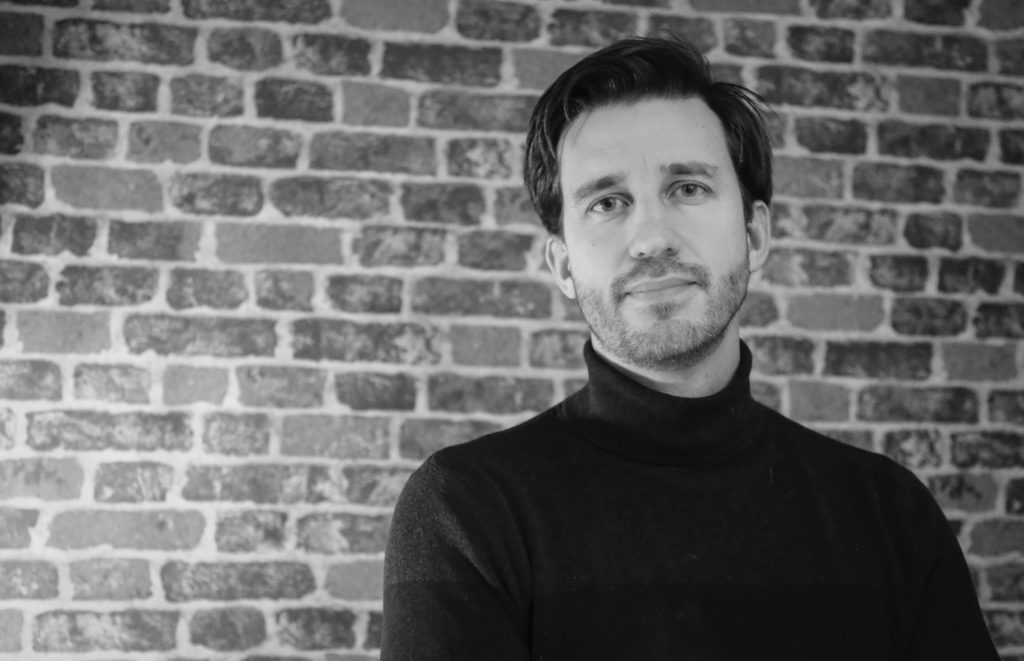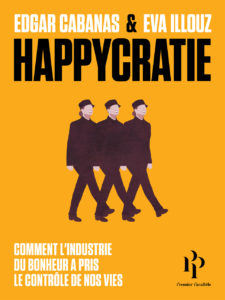L’étude de Durham montre que les TCC (Thérapies Cognitivo Comportementales) sont inefficaces, aussi bien dans le traitement de l’angoisse que celui de la psychose. De plus, son coût est plus élevé que les autres thérapies dans le traitement de l’angoisse.
L’essai clinique est réalisé par l’équipe de Durham en Ecosse, de 1985 à 2001, elle est randomisée, en aveugle et contrôlée par les échelles appropriées. Les patients souffraient de troubles anxieux généralisé, de trouble panique, du syndrome de stress post-traumatique ou de psychose. Sur les 1071 personnes entrées dans l’étude en 85, 489 ont participé à l’évaluation à la fin de l’étude (46% des entrants d’origine) en 2001.
Résultats
Troubles anxieux
Le traitement par la TCC n’a pas supprimé la pathologie. Quand des effets positifs ont été constaté au début, ils avaient disparus à la fin. Un traitement par la TCC plus intensif n’améliorait pas la symptomatologie durablement.
L’analyse coûts-efficacité a montré aucun avantage de la TCC par rapport aux non-TCC.
Les coûts de la TCC étaient plus élevés que les non-TCC.
Psychose
La TCC n’apportait aucune différence par rapport aux traitements non-TCC.
L’analyse coût-efficacité a montré aucun avantage de la TCC par rapport aux non-TCC.
Article original ci-dessous:
Long-term outcome of cognitive behaviour therapy clinical trials in central Scotland
RC Durham,1* JA Chambers,1,2 KG Power,2,3 DM Sharp,4 RR Macdonald,2 KA Major,5 MGT Dow2,6 and AI Gumley7
Health Technology Assessment 2005; Vol 9: number 42
 View/Download full monograph in Adobe Acrobat format (1.21 mbytes)
View/Download full monograph in Adobe Acrobat format (1.21 mbytes)
 View/Download summary in Adobe Acrobat format (suitable for printing)
View/Download summary in Adobe Acrobat format (suitable for printing)
1 Psychiatry and Behavioural Sciences, Division of Pathology and Neuroscience, University of Dundee, UK
2 Department of Psychology, University of Stirling, UK
3 Department of Clinical Psychology, NHS Tayside, UK
4 Institute of Rehabilitation, University of Hull Medical School, UK
5 Health Economics, NHS Ayrshire and Arran, UK
6 Department of Clinical Psychology, NHS Fife, UK
7 Department of Psychological Medicine, University of Glasgow, UK
* Corresponding author
Executive Summary
Objectives
The aim of this study was to consider the following:
- What is the long-term outcome of participants in clinical trials of cognitive behaviour therapy (CBT) for anxiety disorders and psychosis?
- Are there significant differences in effectiveness and cost-effectiveness associated with receiving CBT in comparison with alternative treatments?
- Are there significant differences in effectiveness associated with receiving different intensities of CBT?
- How well can long-term outcome be predicted from data from the original clinical trials?
Design
An attempt was made to contact and interview all of the participants in eight randomised, controlled, clinical trials of CBT for anxiety disorders and two randomised, controlled, clinical trials of CBT for schizophrenia conducted between 1985 and 2001. Case note reviews of healthcare resources used in the 2 years prior to entering the trials and the 2 years prior to follow-up interview were undertaken.
Setting
The clinical trials were conducted in mixed rural and urban settings in five localities in central Scotland. Anxiety disorder trials were conducted mainly in primary care and included three with generalised anxiety disorder, four with panic disorder and one with post-traumatic stress disorder (PTSD). The psychosis studies (one on relapse prevention and one with chronic disorder) were conducted in secondary care.
Participants
An attempt was made to follow up all 1071 entrants to the 10 studies, of whom 125 were not available to be contacted. Of the 946 who were available, 489 agreed to participate (46% of original entrants, 52% of those available to contact).
Method
Follow-up interviews took place between 1999 and 2003, 2–14 years after the original treatment. Interviews for Trials 1–8 were conducted by a research psychologist blind to original treatment condition. Interviews for Trials 9 and 10 were conducted by community psychiatric nurses also blind to treatment condition. Case note reviews were completed following the interview.
Main outcome measures
For Trials 1–8 the main interview-based outcome measures were: Anxiety Disorders Interview Schedule – DSM-IV for diagnosis and co-morbidity, Clinical Global Severity (0–8) and the Hamilton Anxiety Rating Scale. The main patient-rated measures were: Brief Symptom Inventory, SF-36 II, Clinical Global Improvement (1–7), and the Positive and Negative Affect Scale. For Trials 9 and 10 the primary outcome measure was the interview-based Positive and Negative Syndrome Scale (PANSS).
Results
Anxiety disorder studies (Trials 1–8)
Over half of the participants (52%) had at least one diagnosis at long-term follow-up, with significant levels of co-morbidity and health status scores comparable to the lowest 10% of the general population. Few participants had none or only mild symptoms (18%) and a significant proportion (30%) had subthreshold symptoms of at least moderate severity. Only 36% reported receiving no interim treatment for anxiety over the follow-up period with 19% receiving almost constant treatment. Patients with PTSD did particularly poorly. There was a 40% real increase in healthcare costs over the two time periods, mainly due to an increase in prescribing. A close relationship was found between poor mental and physical health for those with a chronic anxiety disorder.
Treatment with CBT was associated with a better long-term outcome than non-CBT in terms of overall symptom severity but not with regard to diagnostic status. The positive effects of CBT found in the original trials were eroded over longer time periods. No evidence was found for an association between more intensive therapy and more enduring effects of CBT. Long-term outcome was found to be most strongly predicted by the complexity and severity of presenting problems at the time of referral, by completion of treatment irrespective of modality and by the amount of interim treatment during the follow-up period. The quality of the therapeutic alliance, measured in two of the studies, was not related to long-term outcome but was related to short-term outcome.
The cost-effectiveness analysis showed no advantages of CBT over non-CBT. For the participants as a whole, CBT was associated with slightly higher costs than non-CBT and slightly higher benefits. For participants who completed CBT, versus all other participants, CBT was associated with somewhat lower costs and slightly higher benefits. The costs of providing CBT in the original trials was only a very small proportion (6.4%) of the overall costs of healthcare for this population, which are high for both physical and mental health problems.
Psychosis studies (Trials 9 and 10)
Outcome was generally poor and only 10% achieved a 25% reduction in total PANSS scores from pretreatment to long-term follow-up. Nearly all participants (93%) reported almost constant treatment over the follow-up period at a significantly higher level than for the anxiety disorder patients. Treatment with CBT was associated with more favourable scores on the three PANSS subscales. However, there were no significant differences between CBT and non-CBT groups in the proportions achieving clinically significant change and very few psychosis patients maintained a 25% reduction in PANSS scores from post-treatment to long-term follow-up regardless of treatment modality.
Cost-effectiveness analysis showed no advantages of CBT over non-CBT. Healthcare costs fell over the two time periods mainly owing to a reduction in inpatient costs.
Conclusions
The implications for healthcare are:
- Psychological therapy services need to recognise that anxiety disorders tend to follow a chronic course and that good outcomes with CBT over the short term are no guarantee of good outcomes over the longer term.
- Clinicians who go beyond standard treatment protocols of about 10 sessions over a 6-month period are unlikely to bring about greater improvement.
- Poor outcomes over the long term are related to greater complexity and severity of presenting problems at the time of referral, failure to complete treatment irrespective of modality and the amount of interim treatment during the follow-up period.
- The relative gains of CBT are greater in anxiety disorders than in psychosis.
Recommendations for future research
Longitudinal research designs over extended periods of time (2–5 years), with large numbers of participants (500+), are required to investigate the relative importance of patient characteristics, therapeutic alliance and therapist expertise in determining the cost-effectiveness of CBT in the longer term.
A better understanding of the mechanisms by which poor treatment responders become increasingly disabled by multiple physical and mental disorders will require close collaboration between researchers in the clinical, biological and social sciences.
Publication
Durham RC, Chambers JA, Power KG, Sharp DM, Macdonald RR, Major KA, et al. Long-term outcome of cognitive behaviour therapy clinical trials in central Scotland. Health Technol Assess 2005;9(42).
NHS R&D HTA Programme
The research findings from the NHS R&D Health Technology Assessment (HTA) Programme directly influence key decision-making bodies such as the National Institute for Health and Clinical Excellence (NICE) and the National Screening Committee (NSC) who rely on HTA outputs to help raise standards of care. HTA findings also help to improve the quality of the service in the NHS indirectly in that they form a key component of the ‘National Knowledge Service’ that is being developed to improve the evidence of clinical practice throughout the NHS.
The HTA Programme was set up in 1993. Its role is to ensure that high-quality research information on the costs, effectiveness and broader impact of health technologies is produced in the most efficient way for those who use, manage and provide care in the NHS. ‘Health technologies’ are broadly defined to include all interventions used to promote health, prevent and treat disease, and improve rehabilitation and long-term care, rather than settings of care.
The HTA Programme commissions research only on topics where it has identified key gaps in the evidence needed by the NHS. Suggestions for topics are actively sought from people working in the NHS, the public, service-users groups and professional bodies such as Royal Colleges and NHS Trusts.
Research suggestions are carefully considered by panels of independent experts (including service users) whose advice results in a ranked list of recommended research priorities. The HTA Programme then commissions the research team best suited to undertake the work, in the manner most appropriate to find the relevant answers. Some projects may take only months, others need several years to answer the research questions adequately. They may involve synthesising existing evidence or conducting a trial to produce new evidence where none currently exists.
Additionally, through its Technology Assessment Report (TAR) call-off contract, the HTA Programme is able to commission bespoke reports, principally for NICE, but also for other policy customers, such as a National Clinical Director. TARs bring together evidence on key aspects of the use of specific technologies and usually have to be completed within a short time period.
Criteria for inclusion in the HTA monograph series
Reports are published in the HTA monograph series if (1) they have resulted from work commissioned for the HTA Programme, and (2) they are of a sufficiently high scientific quality as assessed by the referees and editors.
Reviews in Health Technology Assessment are termed ‘systematic’ when the account of the search, appraisal and synthesis methods (to minimise biases and random errors) would, in theory, permit the replication of the review by others.
The research reported in this monograph was commissioned by the HTA Programme as project number 96/39/18. The contractual start date was in January 1999. The draft report began editorial review in April 2004 and was accepted for publication in May 2005. As the funder, by devising a commissioning brief, the HTA Programme specified the research question and study design. The authors have been wholly responsible for all data collection, analysis and interpretation, and for writing up their work. The HTA editors and publisher have tried to ensure the accuracy of the authors’ report and would like to thank the referees for their constructive comments on the draft document. However, they do not accept liability for damages or losses arising from material published in this report.
The views expressed in this publication are those of the authors and not necessarily those of the HTA Programme or the Department of Health.
Editor-in-Chief: Professor Tom Walley
Series Editors: Dr Peter Davidson, Dr Chris Hyde, Dr Ruairidh Milne, Dr Rob Riemsma and Dr Ken Stein
Managing Editors: Sally Bailey and Sarah Llewellyn Lloyd
© 2005 Crown Copyright



 soi ». Si nous échouons dans tel ou tel domaine de notre vie, ce serait parce que nous ne nous en croyons pas capable. Cette idée nous est assénée à longueur de temps par les prosélytes de ces thérapies (la méditation pleine conscience surtout, et aussi les thérapies cognitivo-comportementales en partie).
soi ». Si nous échouons dans tel ou tel domaine de notre vie, ce serait parce que nous ne nous en croyons pas capable. Cette idée nous est assénée à longueur de temps par les prosélytes de ces thérapies (la méditation pleine conscience surtout, et aussi les thérapies cognitivo-comportementales en partie).  Si bien que leur évaluation est proposée dans le plan autisme 2008-2010. Une évaluation, portant sur 578 enfants a été publiée par la Caisse Nationale de Solidarité pour l’Autonomie (CNSA) en février 2015. La question est de savoir si « le surcoût du fonctionnement » de ces structures ABA expérimentale est justifié par de meilleurs résultats ?
Si bien que leur évaluation est proposée dans le plan autisme 2008-2010. Une évaluation, portant sur 578 enfants a été publiée par la Caisse Nationale de Solidarité pour l’Autonomie (CNSA) en février 2015. La question est de savoir si « le surcoût du fonctionnement » de ces structures ABA expérimentale est justifié par de meilleurs résultats ? 
